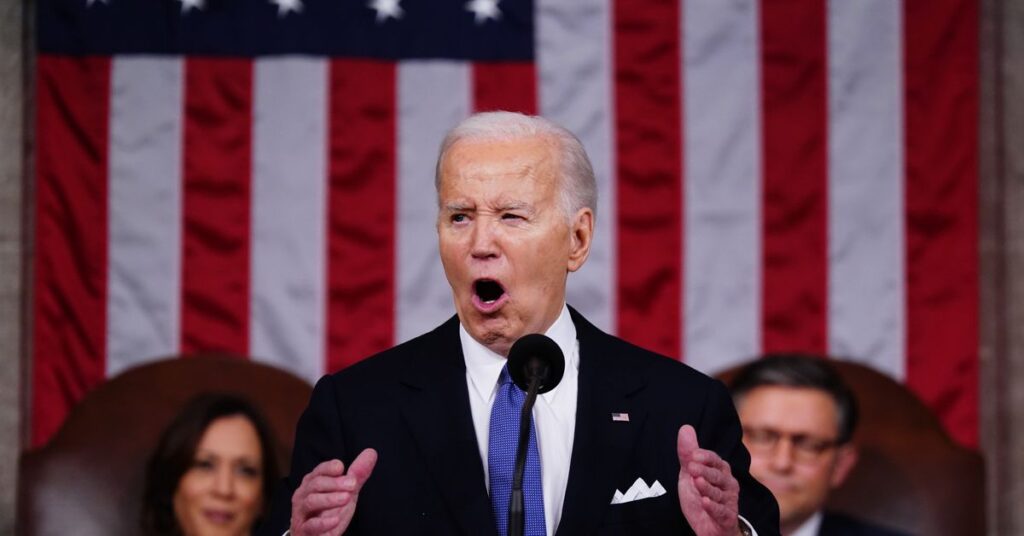The state of Joe Biden’s reelection campaign is weak. The president entered Thursday night’s State of the Union address with a 56 percent disapproval rating, which is roughly the same as Donald Trump’s was in the immediate aftermath of January 6. In national polls, Biden trails Trump by an average of 2.2 percent; his standing in battleground state surveys is even worse.
The president has problems that no single speech can solve. But with a rare opportunity to address a large national audience, he aimed to mitigate at least a few of them. Biden’s most widely discussed challenge is the electorate’s concerns about his age and mental acuity. He tried to assuage those on Thursday night with an energetic, combative, and exceptionally partisan address. The octogenarian-in-chief appeared to take delight in the GOP’s heckles, veering off script to spar with his critics and often seeming to get the better of them.
But voters’ doubts about Biden are not confined to his cognitive fitness. They’ve also taken a dim view of his economic management.
Polls consistently show Americans favoring Trump over Biden on “the economy” by double-digit margins. In one recent CBS News survey, 65 percent of Americans said that the economy under Trump was good, while only 38 percent said the same of the economy under Biden. In the New York Times/Siena’s polling, 40 percent of Americans said that Trump’s policies had helped them, while only 18 percent said as much of Biden’s policies.
Those well-versed in the contemporary economy’s objective virtues — rising real wages, declining inequality, high household wealth, and low unemployment — may find these figures baffling. Yet prices remain much higher than they were when Biden took office, and the Fed’s interest rate hikes have exacerbated the impact of these elevated costs. Polls, focus groups, and economic research all indicate that it is this jump in the cost of living that’s driving the public’s…
Read the full article here





